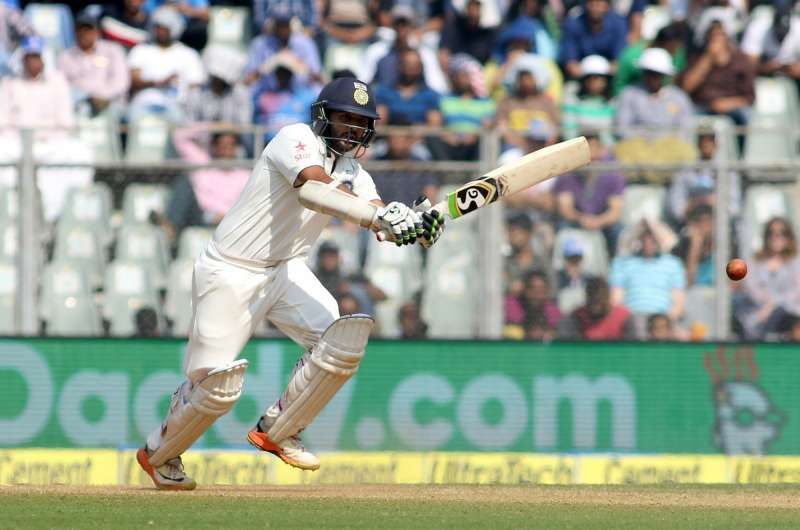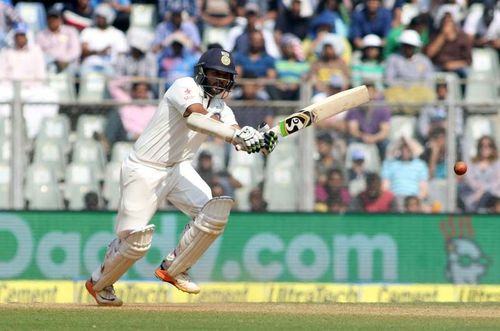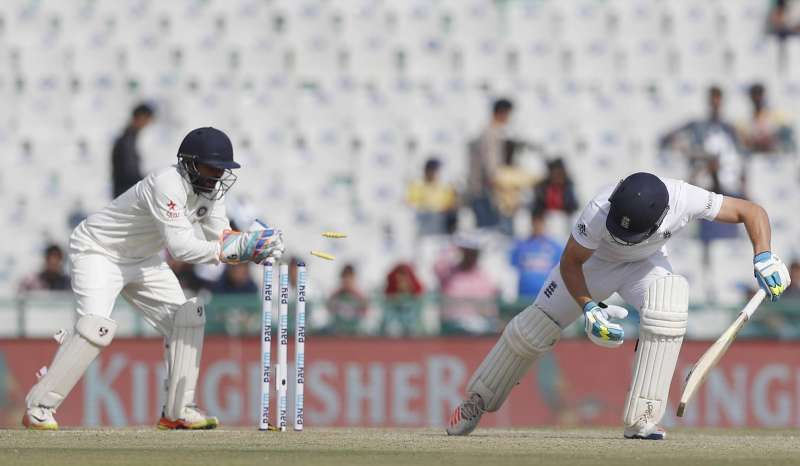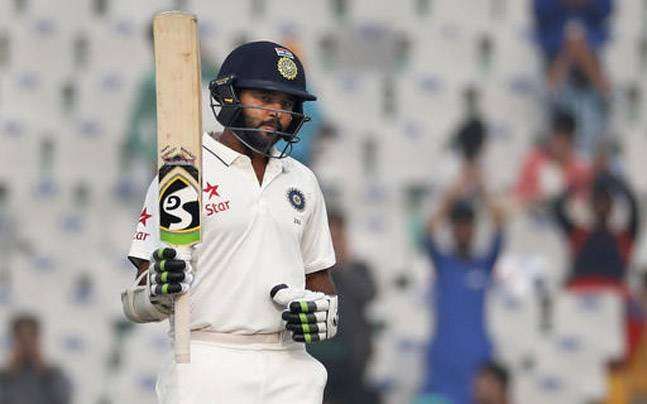
Should Parthiv Patel be India's full-time keeper?

When baby-faced Parthiv Patel walked out to bat at Trent Bridge in 2002, he was all of 17 years of age. To say that he was thrown in the deep end would be an understatement. In the process, he became the youngest Test wicketkeeper ever and the fourth-youngest Test debutant for India.
He had made his First Class debut the previous season, leaving him with precious little match experience. That being said, he kept wickets admirably (for a 17-year-old) to the likes of Ashish Nehra, Zaheer Khan, Ajit Agarkar, Anil Kumble and Harbhajan Singh. In hindsight, it was definitely a case of too much, too early.
When Wriddhiman Saha got injured ahead of the third Test at Mohali in India’s Test series against England in 2016, the Indian selectors probably did not want to repeat that mistake. That is exactly why they did not pick young Rishabh Pant, who has been in dazzling form with the bat recently.
The thought of blooding the 19-year-old too early held the selectors back. Ironically, this meant a Test comeback for Parthiv Patel. Parthiv’s last Test was a one-off appearance against Sri Lanka in 2008. His last Test before that was in 2004.
Unfortunate to be Dhoni’s peer
There was a period in the early 2000s, when India was struggling to find a wicketkeeper. Vijay Dahiya, Sameer Dighe, Deep Dasgupta, Ajay Ratra, all got opportunities, but could not hold on to the spot. A young Parthiv Patel did show more promise than all the others and became the first choice keeper between 2002 and 2004, but after losing his place to Dinesh Karthik and with MS Dhoni’s emergence, any chances of his return to the national team suddenly became very bleak.
Others too suffered Parthiv’s fate. Having to compete against MS Dhoni for a place in the side, many bright keepers’ careers were restricted to the domestic circuit and the occasional international appearance. Dinesh Karthik made his Test debut before Dhoni but since, has played only 23 Tests the last of which was 6 years ago. Naman Ojha has only played one Test so far, as a replacement for Saha.
A specialist keeper
Even as a chubby-faced teenager, Patel stood out for his temperament. He did not exactly set the stage on fire with his batting (as he has subsequently done in the IPL) but was still persisted with for 20 Tests, because of his skills as a wicketkeeper.
Despite his small build, he was happy to throw himself around and go for the difficult half-chances. Although he was sloppy behind the stumps in his earlier stints with the national side, his stumpings of Ben Stokes and Alastair Cook in the third and fourth Tests respectively evoked memories of Dhoni’s lightning quick hands.
The Gujarat player is a specialist wicketkeeper, but prone to the occasional mistake. While Saha might be effective without being flashy, Parthiv has moulded himself more in the fashion of a Dhoni or a Gilchrist. Over their respective careers at the domestic level, Parthiv has effected more dismissals than Saha.
| Matches | Innings | Catches | Catches/Inning | Stumpings | Stumpings/Innings | |
| Parthiv Patel | 164 | 242 | 406 | 1.67 | 65 | 0.26 |
| Wriddhiman Saha | 91 | 142 | 212 | 1.49 | 30 | 0.21 |
What prompted the selectors to go with Parthiv, apart from his keeping skills, may have been his ability with the bat. He had opened the batting on a few occasions way back in 2003-04, and since, has proven himself at the domestic level.
With a question mark over the fitness of KL Rahul for the third Test, Parthiv provided the much-needed option of a makeshift opener. In the second innings of that same Test, he scored an unbeaten 67 in quick time, to take India to victory.
A handy batsman
Another facet Patel presents, that Saha doesn’t, is the flexibility he offers the team with his batting position. Having played at a variety of levels, right from age-group cricket, to the domestic circuit and international cricket, and a variety of batting positions, Parthiv brings a blend of talent, adaptability and a wealth of experience to the batting department.
What he also brings to the table is the ability to play against the new ball. There has been the one-off chance where the openers have been injured and drafting a last minute replacement isn’t always possible. Typically, Pujara is pushed up to open the innings in such situations, as was the case in Sri Lanka. Patel could solve that riddle if he became the preferred keeper in the starting XI.
Parthiv, however, isn’t alone in possessing a good domestic record. Saha, Dinesh Karthik and Naman Ojha all have excellent records at the First Class level, leaving little to choose between them. The choice, therefore, should really depend on who the best wicketkeeper is.
Without doubt, India will look for some lower order stability from the wicketkeeper, but not at the expense of slipshod glovework. With Saha dropping a couple of regulation catches in the first and second Test, there appears to be a question mark on his form behind the stumps.
A successful comeback
So far in the series, we have witnessed Saha in the first two Tests and Parthiv in the next two. Saha managed 49 runs in 4 innings and 6 catches behind the stumps. The Gujarati wicketkeeper, in comparison, has 124 runs from 3 outings and 7 catches and 2 stumpings. While comparisons over two Tests each might not be worthy because of a small sample size, Parthiv has looked completely at home since his arrival to replace Saha. Knowing that he is but a replacement might put some pressure on the incumbent, but that hasn’t shown so far on Parthiv.
The baby-faced Parthiv of 2002 has evolved into a matured cricketer now – one who knows his game very well. He has also become adept at playing mind games, as he picked on the English spinners in a media interaction.
The English spinners might have had the last laugh, dismissing him for 15 runs, but it is his understanding of the pitch and the nature of bowling required on it that stood out. He also played a vital role in the decision of whether to go for the DRS. While Jadeja was pleading Kohli for a review in the fourth Test, Parthiv didn’t appear in favour of it. India lost the review.
Prolific at the domestic level
Between his last last Test in 2008 and his comeback, Parthiv accumulated 5,234 First Class runs at an average of 51.31, with 16 hundreds and 29 fifties. This proves that despite having played only one Test between 2004 and 2016, he did not lose the hunger for runs. He has been prolific at the domestic level, both with his wicketkeeping and his batting, and thus, gave himself the best chance for a recall to the national side. He might have been gifted his debut and initial Test matches, but this Test recall is deserving because it has come on the back of years of hard work at the domestic level.
In the end, it might all boil down to who is in better form behind the stumps – that being the first and foremost duty of the wicketkeeper. Patel is definitely in form this season – he has 415 runs at an average of 59.28 to go with 17 dismissals in the current Ranji season. His attacking batsmanship might also be more appreciated by the captain, Virat Kohli, who always encourages attacking strokeplay from his teammates.
With Parthiv playing the Chennai Test, he gets one more opportunity to prove himself. Whether he remains in the scheme of things when the next Test comes around, only time will tell.
Statistics courtesy of ESPNcricinfo, up to date as of 15th December, 2016

